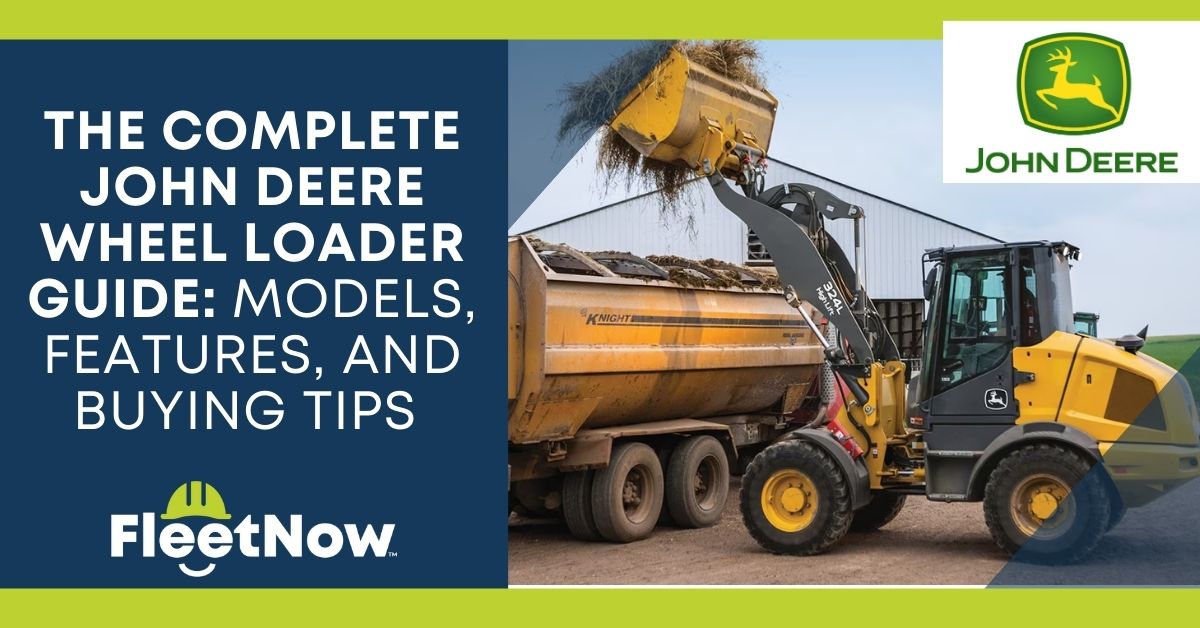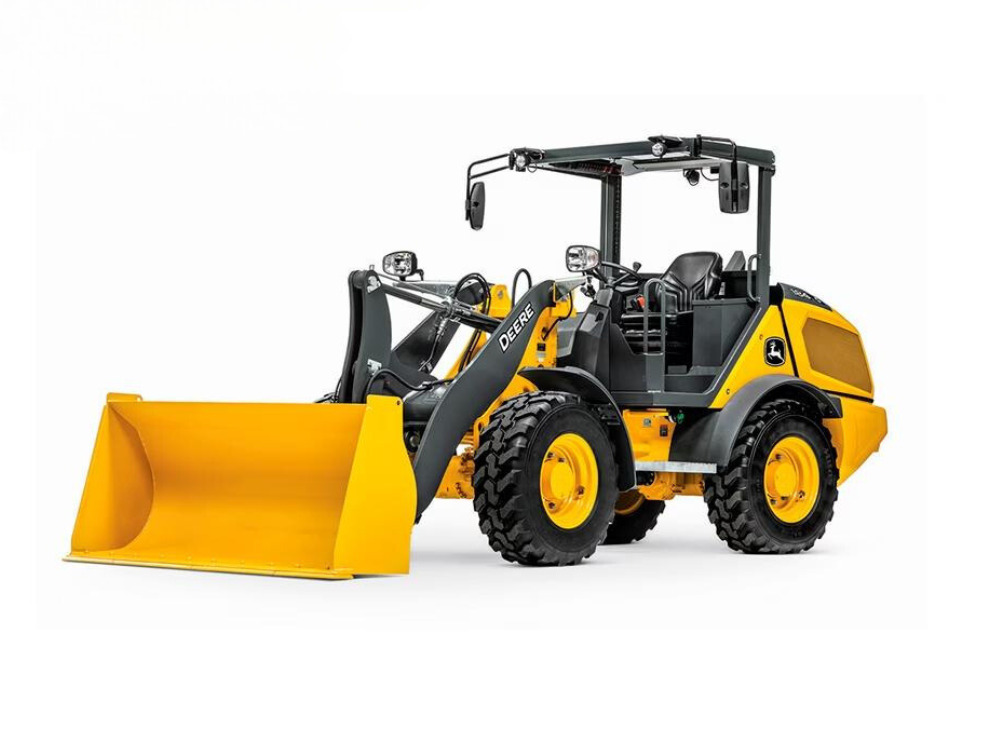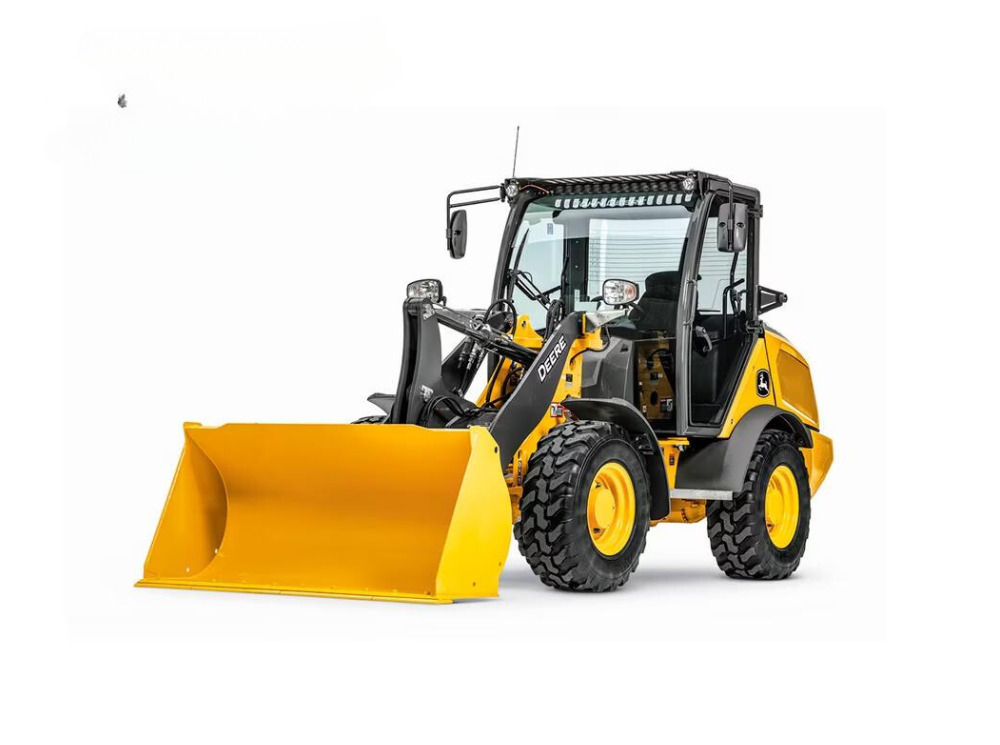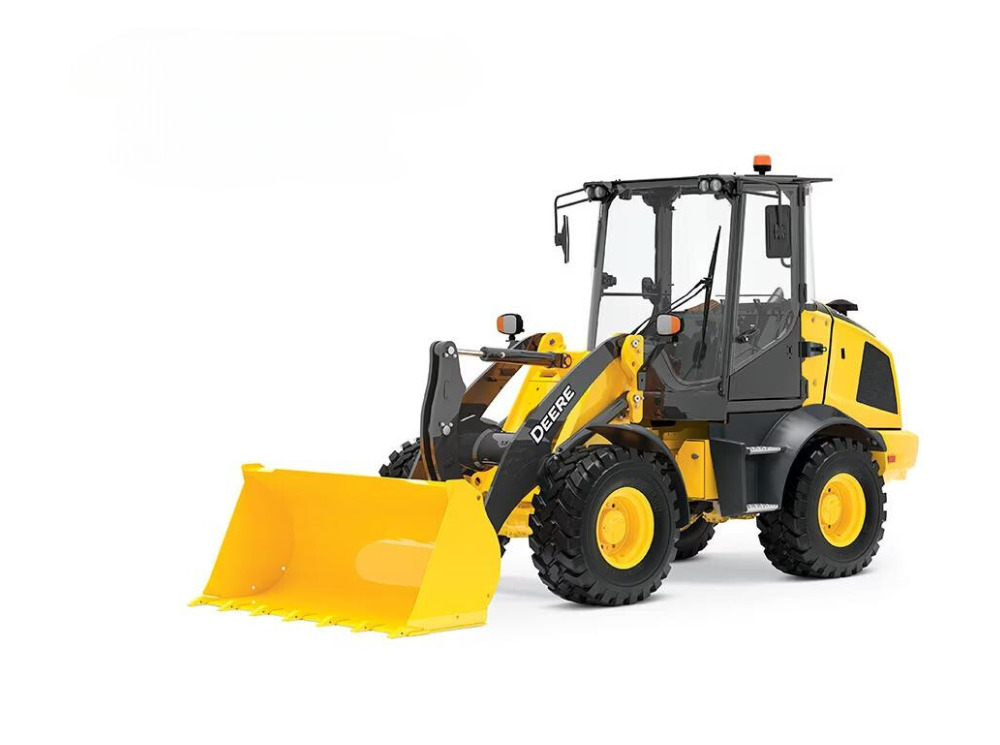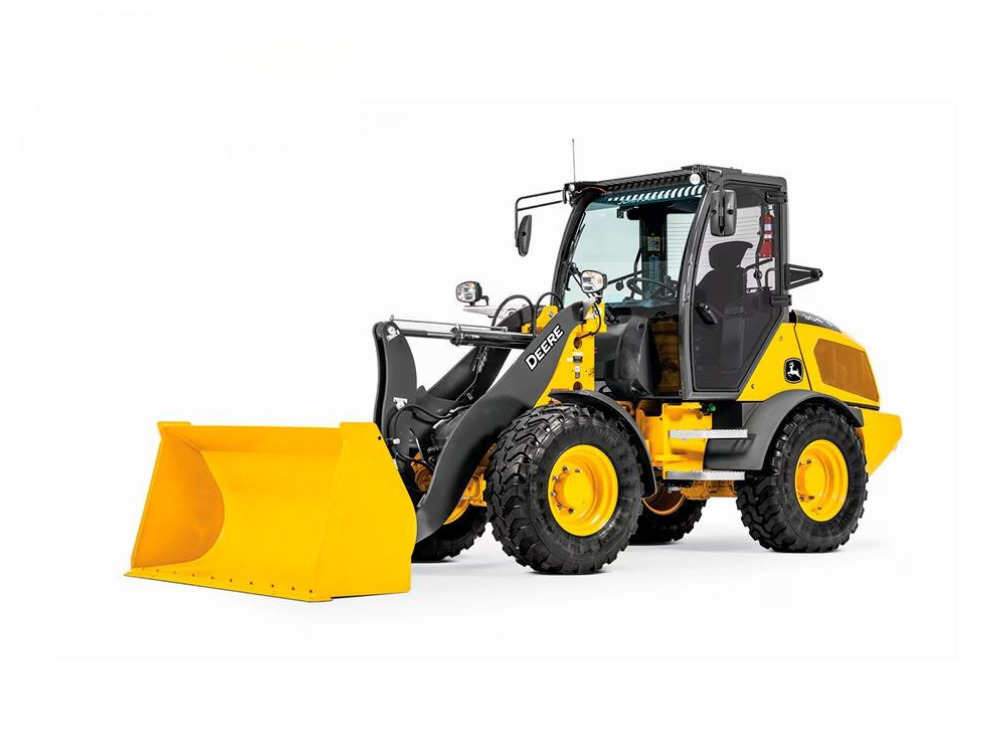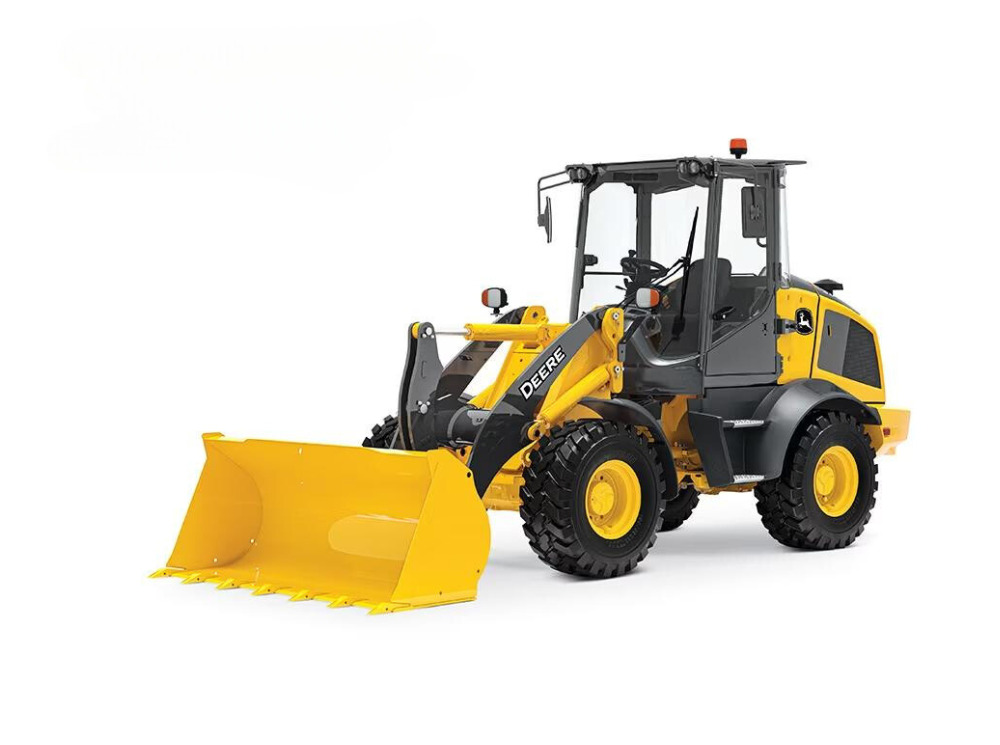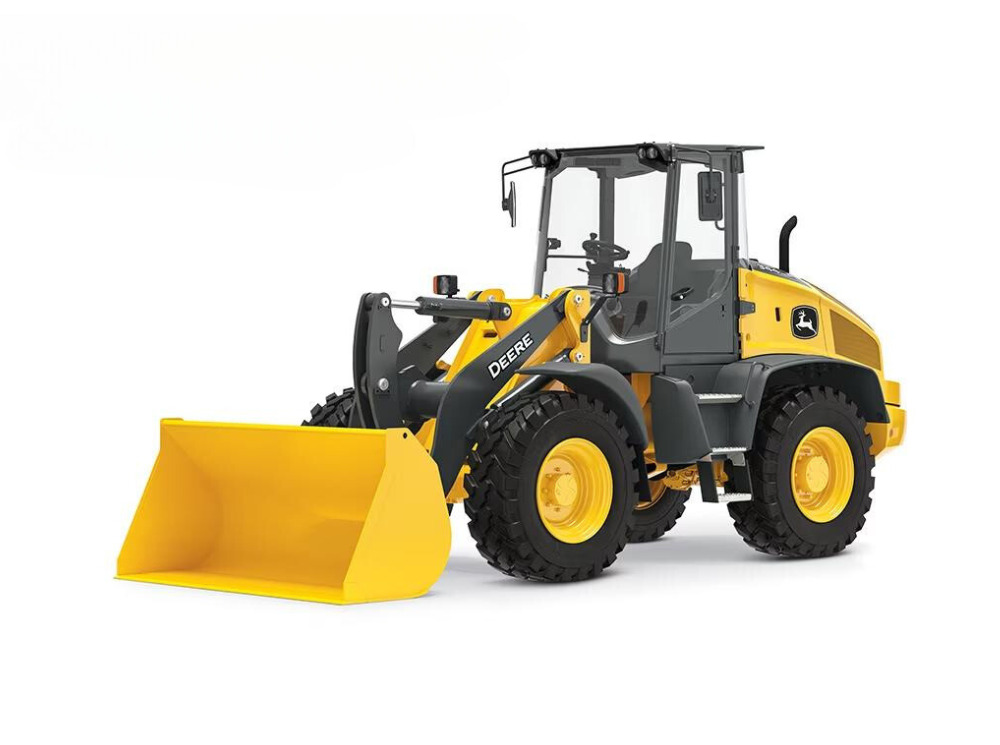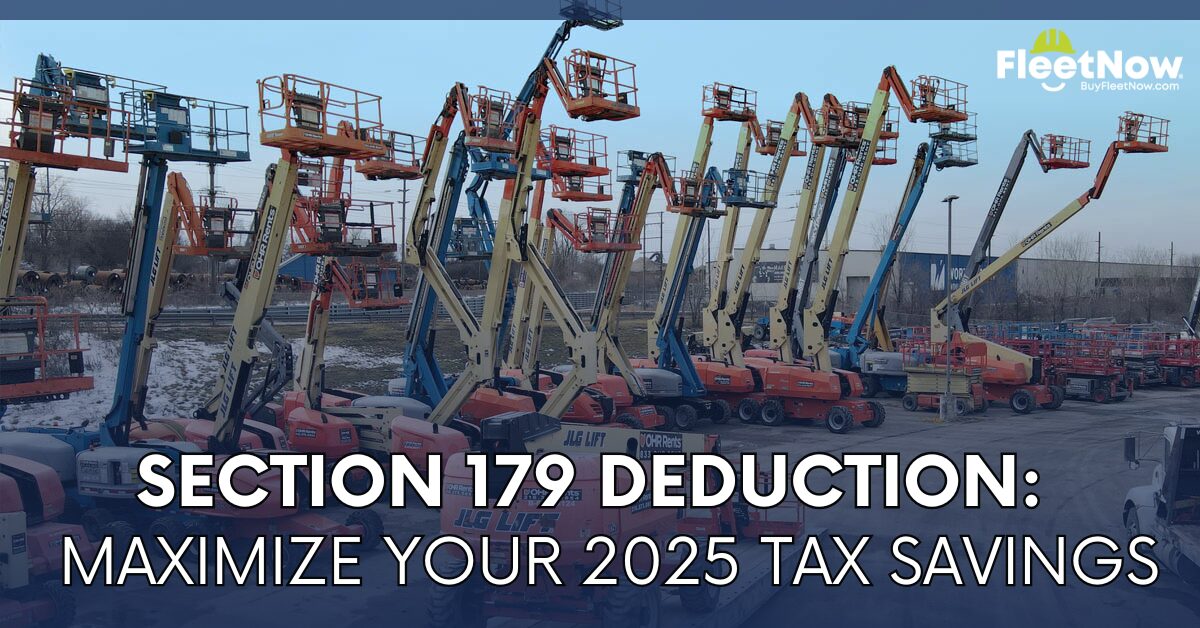The Complete John Deere Wheel Loader Guide: Models, Features, and Buying Tips
John Deere Wheel Loaders are easy to operate and can do a tremendous amount of work on a construction site, a farm, or an industrial cleanup site. If you need to transport raw material from a demolition site, haul sand for a fill-in project, or simply dig a hole, a wheel loader is the tool to get the job done. You might also hear this vehicle referred to as a front-end loader, a payloader, or a loading machine. They all do the same thing with the attached bucket on the front end: Haul materials from Point A to Point B on your job site with as little effort as possible.
Why Choose A John Deere Wheel Loader?
The compact size of a John Deere wheel loader is one of its biggest selling points. The vehicle is extremely maneuverable in tight quarters, eliminating the need for as many three-point turns. This also offers faster loading and unloading cycles. The latest versions of the John Deer wheel loader have a pressurized cab with louvers and defrosters to keep the glass clear. A 360-degree field of view offers a clear view in every direction.
Preset configurations at the touch of a button allow the pilot of a John Deere wheel loader to speed up production in repetitive loading patterns. Set return-to-carry height, return-to-dig, boom height kick-out, and other options can all be set with simple controls. You’d expect nothing less from a company that’s been in business since 1837. John Deere’s equipment speaks for itself after providing top-quality equipment for nearly 200 years.
John Deere Wheel Loader Models & Specs
John Deere has eliminated the X-Tier of wheel loaders in this current generation, leaving the G-Tier and P-Tier as the two available models. Among the six loaders available, the biggest differences are in horsepower (44 hp to 103 hp) and operating weight (10,670 lbs. to 19,533 lbs.). Bucket capacities can range from 1 to 3 cubic yards. The powerful front-end hydraulics on John Deere wheel loaders allow a huge range of attachments to be used, increasing productivity and versatility.
Key Features of John Deere Wheel Loaders
The main features of the current generation of John Deere wheel loaders are the easy push-button controls for the lift arm and more than 100 John Deere attachments that can be easily affixed to the machine. John Deere uses a universal Quik-Tatch™ system that allows the operator to quickly and efficiently switch out attachments for different applications. You can accomplish much more than simple loading and hauling with John Deere attachments, which include:
• Bale huggers, bale spears, nursery forks, and rollout buckets
• Augers and trenchers
• Backhoes
• Dozer blades, snow blades, V-blades, and box blades
• Angle brooms and pickup brooms
• Multipurpose buckets, rock buckets, utility buckets and more
• Rotary cutters, rotary brush cutters, stump shredders, and mulching heads
• Pallet forks
• Hammers
• Cold planers
• Plate compactors
• Power rakes, root rakes, and rotary tillers
• Vibratory rollers
• Snow blowers and snow pushers
Applications and Uses of John Deere Wheel Loaders
The primary uses for a John Deere wheel loader are agricultural and general construction. However, with the right attachments, this compact wheel loader can be used year-round for a variety of projects. Wheel loaders can be used in road construction, materials hauling, landscaping, brush clearing, digging, and much more. John Deere’s Quik-Tatch™ system has been around for decades, so it’s possible to find attachments that date back many years that will still fit a new wheel loader.
Buying Guide
Factors to Consider When Choosing a Model
Size and horsepower are really the main considerations when buying a wheel loader from John Deere. It may be tempting to buy a smaller model initially because of the cost savings. However, if you plan to expand your business in the future and might need a more robust model, it might make sense to bite the bullet and purchase a larger one now. Remember that horsepower is about more than just speed on the road; it also affects how much you are able to lift and carry with a wheel loader.
New vs. Used Options
John Deere wheel loaders don’t depreciate a lot when they are properly maintained. It’s possible to find used versions from the early 1990s that still cost more than a used car. This speaks to the high quality of these machines. A used machine is also going to be cheaper to insure. A new wheel loader is likely to require less maintenance than a used one, so it will save you money on up-front costs. Keep in mind that there are many discontinued wheel loaders that are still on the market. This can make sourcing parts for a used wheel loader difficult sometimes, but not impossible.
Financing and Warranty Options
John Deere offers in-house financing, and approved dealers will usually rely on that when selling a new wheel loader. The warranty on a new John Deere wheel loader is generally 24 months so long as it is used for personal use by a private owner. For all other applications and uses, the warranty is 12 months on parts, drivetrains, and engines.
Maintenance and Care
The maintenance schedule for a John Deere wheel loader is straightforward and should be in the operator’s manual when you purchase it. In general, various filters need to be replaced after every 500 hours of operation. This includes the engine oil filter, primary and secondary fuel filter, front PTO, and air filters. The transmission oil filter should be replaced after the first 100 hours of use, and every 500 hours after that.
Customer Testimonials
When comparing John Deere wheel loaders to their CAT counterparts, real-world operators have shared insightful opinions in forums like Red Power Magazine. Here’s what users had to say when discussing their experience with both brands:
One operator noted, “The Deere was by far the better loader, although it was a tad bigger. The Deere had a roomier cab, service points were a lot easier to get at, and overall just a lot nicer to operate. Not saying the CAT wasn’t a good loader, it just wasn’t as nice as the Deere.”
Others echoed similar sentiments, praising the smooth handling and comfort of John Deere loaders. “The Deere is a very nice driving machine,” remarked one user, while another pointed out the convenience of the controls, stating, “Deere has a nice joystick/reverser.”
These reviews highlight why many operators prefer John Deere for its operator-friendly features, ease of maintenance, and overall driving experience.
Here’s a Video Detailing the John Deere Wheel Loader Operator Controls:
Frequently Asked Questions (FAQs)
What is the price range for John Deere wheel loaders?
A new 184 G-Tier starts at around $82,000. The largest model, the 344 P-Tier, starts at around $200,000. Used models will obviously cost less, but buyers should do a thorough inspection and check the number of hours on the engine before purchasing.
How do I select the right model for my specific needs?
With the huge variety of attachments that John Deere sells, any model has the ability to perform many different functions. Selecting the correct model then comes down to how much lift capacity you need. The smaller versions of wheel loaders can handle a load capacity of around 1,000 pounds, depending on the type of bucket attached. The largest version of wheel loader can safely handle up to 10,000 pounds of materials.
Are there financing options available for purchasing John Deere wheel loaders?
John Deere Financing will usually provide the best option for purchasing a new wheel loader. FleetNow can help with financing options for used Wheel Loaders.
What maintenance schedule should I follow for John Deere loaders?
Refer to your owner’s manual to learn the proper maintenance schedule for a wheel loader. In general, certain parts and filters should be swapped out or replaced every 100 to 500 hours. Certain parts can operate for up to 1,500 hours without needing maintenance or replacement.
Are there training programs or certifications for operating John Deere wheel loaders?
Yes. John Deere offers certification on its equipment, and local schools across the country do so as well. Certification usually requires a few hours of in-classroom instruction and a written test, followed by a hands-on skills testing session on a machine.
Tell us what you’re looking for:

